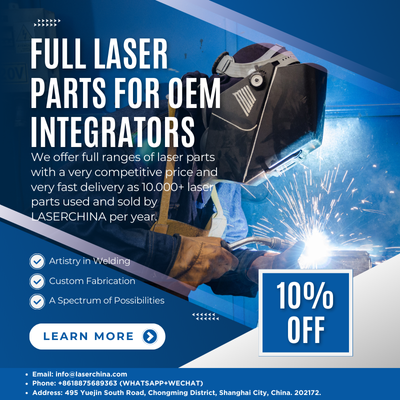What is Laser Equipment and How is it Used Across Different Industries
Laser equipment refers to a wide range of tools and machines that utilize laser (Light Amplification by Stimulated Emission of Radiation) technology to perform tasks such as cutting, engraving, welding, measuring, marking, and even medical treatments. But what exactly does laser equipment include, and how is it used across various industries?
What is Laser Equipment?
Laser equipment encompasses any device or system that generates and uses a concentrated beam of light (laser) for practical applications. These beams are highly focused and precise, making them ideal for tasks that require accuracy, control, and minimal damage to the surrounding material.
There are various types of laser equipment, each designed for a specific purpose. Some are used in industrial manufacturing for cutting and engraving, while others are used in medical fields for surgery and skin treatments. Lasers are also used in communication, measurement tools, scientific research, and even entertainment.
Common Types of Laser Equipment
- Laser Engraving and Cutting Machines:
These machines are used to engrave or cut materials like wood, plastic, metal, and glass. Common in manufacturing, design, and crafts industries. - Laser Welding Equipment:
Used for joining metal components with high precision. It is common in the automotive, aerospace, and electronics industries. - Laser Measuring Devices:
Tools like laser distance meters and laser levels are used in construction and engineering for accurate measurement. - Medical Laser Equipment:
Includes surgical lasers, dental lasers, and cosmetic lasers (like for tattoo or hair removal). These are designed to be safe and precise for treating human tissue. - Laser Marking Machines:
Used to mark surfaces with serial numbers, barcodes, or logos. Popular in packaging, electronics, and product tracking. - Laser Cleaning Machines:
Used to remove rust, paint, or coatings from surfaces without damaging the base material—common in restoration and maintenance.
Applications of Laser Equipment
- Manufacturing and Industrial Use:
Laser machines are widely used to cut metal sheets, mark product IDs, engrave parts, and weld components. - Medical Field:
Laser technology is used in surgeries, eye treatments (like LASIK), and dermatological procedures. - Construction and Architecture:
Laser distance meters and alignment tools provide accurate measurements, improving building precision. - Electronics:
Used for cutting circuit boards, engraving small components, and micro-welding. - Art and Craft:
Designers use laser equipment to create custom items, from jewelry and decor to personalized gifts.
Benefits of Laser Equipment
- Precision and Accuracy: Allows for clean, detailed work even on delicate or small-scale surfaces.
- Speed and Efficiency: Laser machines work quickly, improving productivity.
- Low Maintenance: Most laser tools have fewer moving parts and need minimal maintenance.
- Non-Contact Process: Reduces damage to the material and extends equipment life.
- Versatility: One laser system can often be adapted for multiple uses.
Future of Laser Equipment
As laser technology continues to advance, laser equipment is becoming more compact, affordable, and user-friendly, opening up new opportunities even for small businesses and hobbyists. Key trends shaping the future of laser equipment include:
- Automation and Smart Integration:
Many modern laser systems now include AI-based controls, automated positioning, and real-time monitoring. This reduces the need for manual adjustments and improves precision. - Higher Power with Compact Design:
New laser sources, especially in fiber and diode lasers, are becoming more powerful yet smaller in size. This allows for portable laser tools that are easy to integrate into workshops, clinics, or even mobile services. - Eco-Friendly Processing:
Since lasers do not require chemicals or consumables (like ink or blades), they offer a more environmentally friendly solution. Laser cleaning, in particular, is replacing traditional abrasive or chemical cleaning in many industries. - Expanded Material Compatibility:
Advancements in laser wavelengths and beam control have made it possible to process more complex materials like composites, ceramics, and treated surfaces.
Conclusion
Laser equipment has become an essential tool across countless industries thanks to its precision, speed, and adaptability. From industrial production and healthcare to art and construction, lasers offer modern, efficient solutions for complex tasks. As technology continues to evolve, laser equipment is expected to become even more accessible, powerful, and diverse in its applications.













